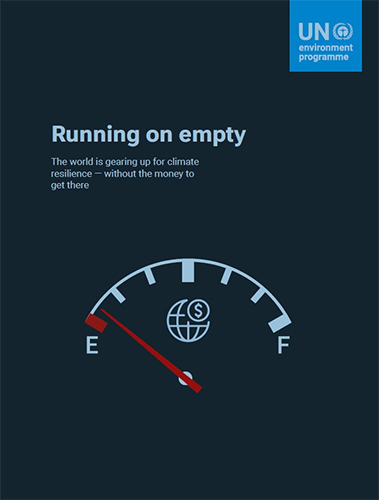Global progress on adaptation implementation (Chapter in UNEP’s Adaptation Gap Report 2025)

Where do we stand globally on climate change adaptation? UNEP’s Adaptation Gap Report (AGR) provides a detailed account of adaptation planning, finance and implementation. Since its inception in 2020, the implementation chapter of the report has provided an overview of implemented adaptation action worldwide, using various data sources of global and intercontinental coverage. Its 2025 edition provides the first comprehensive analysis of the adaptation reporting of almost 100 countries under the Paris Agreement. It also updates the longitudinal assessment of adaptation projects under the Adaptation Fund, the Green Climate Fund, and the Global Environment Facility and provides a new overview of adaptation implementation by Multilateral Development Banks – see the key messages below.
The Adaptation Gap Report was launched on 29 October 2025 by UNEP’s Executive Director. The Grantham Research Institute has been an important contributor to the Adaptation Gap Report. Since 2020, Timo Leiter has been leading the chapter ‘Global progress on adaptation implementation’, which has broadened previous assessment of adaptation beyond planning and finance to track actual implementation.
Key messages
- The combined funding volume of new adaptation projects starting implementation under the Adaptation Fund, the Green Climate Fund (GCF), and the two funds managed by the Global Environment Facility (GEF) – namely the Least Developed Countries Fund (LDCF) and Special Climate Change Fund (SCCF) – reached almost US$1 billion in 2024, an increase of 90% over the five-year moving average between 2019 and 2023
- As at 31 August 2025, 94 countries have submitted a biennial transparency report (BTR) containing detailed information on climate adaptation. While this volume of BTRs is promising, a number of gaps exist that undermine their ability to adequately inform global assessments of adaptation. In particular, information on adaptation action and their results accounts for a small proportion of all information included in BTRs (just over 20 per cent). The majority of the information in these documents relates to climate hazards, systems at risk, climate impacts and adaptation priorities which does not allow assessing whether implementation actually takes place.
- The consistency of adaptation reporting within BTRs needs to improve to enable comprehensive assessments of progress towards the targets of the framework for the Global Goal on Adaptation. Most countries do not consistently link information on climate hazards, climate impacts and risks with information on adaptation priorities, actions and results. In addition, when reporting on progress in implementation and results, many countries do not provide information about progress made in implementing national adaptation plans (NAPs).
- National adaptation monitoring and evaluation systems play a key role in generating information about adaptation progress that can be used in international reporting to inform the 2nd Global Stocktake under the Paris Agreement.
Leiter, T., Njuguna, L., Singh, C., Mugwimi, M., Muller, L., Joshi, N., Vyas, D. (2025). Global progress on adaptation implementation. Chapter 3 in: UNEP (Eds.). Adaptation Gap Report 2025: Running on empty, pp.21-36. Nairobi, Kenya.

